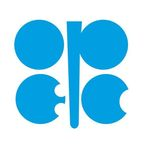OPEC+ Faces Crossroads: The Balancing Act of Oil Production
May 30, 2025, 11:03 am
The oil market is a delicate dance, a balancing act between supply and demand. As summer approaches, OPEC+ finds itself at a pivotal moment. The alliance, which includes major players like Saudi Arabia and Russia, is poised to increase oil production. The stakes are high, and the implications are far-reaching.
In recent months, eight OPEC+ members have been unwinding voluntary production cuts. This shift signals a new chapter in the oil saga. The countries involved—Russia, Saudi Arabia, Algeria, Iraq, Kazakhstan, Kuwait, Oman, and the United Arab Emirates—are preparing to boost output by as much as 411,000 barrels per day in July. This move comes as the world watches closely, awaiting the final decision set for May 31.
The backdrop is a complex web of agreements and quotas. OPEC+ has been operating under a group-wide production agreement, which aims to stabilize the market. However, the eight nations have been implementing their own cuts, separate from the broader OPEC+ strategy. These cuts, totaling 1.66 million barrels per day, are set to last until the end of next year. The group has also agreed to gradually increase output by a combined 1 million barrels per day over the months of April to June.
As the summer travel season approaches, demand for oil typically spikes. Higher consumption of jet fuel and gasoline is expected, alongside increased crude burn for electricity in the sweltering Middle East. This seasonal uptick in demand could provide a cushion for oil prices, which have been under pressure from broader market uncertainties, including U.S. tariffs.
The recent OPEC+ meeting reaffirmed the existing production quotas, leaving the formal output unchanged. However, the focus has shifted to the eight-member subset that is unwinding its voluntary cuts. This group is under scrutiny, as concerns grow about compliance with production quotas. The delicate balance of supply and demand is further complicated by the need for all members to adhere to their commitments.
Oil prices reacted positively to the OPEC+ meeting. Brent crude futures rose to $65.31 per barrel, while West Texas Intermediate (WTI) climbed to $62.22. These increases reflect market optimism, but the future remains uncertain. Analysts predict that oil prices may hover in the $60 to $70 range in the coming months, driven by seasonal demand and the potential for increased output.
The dynamics within OPEC+ are intricate. The alliance must navigate the interests of its members while responding to global market conditions. Some nations, like Kazakhstan and Iraq, have struggled to meet their production quotas in the past. This inconsistency raises questions about the effectiveness of the group's agreements. The UAE's Energy Minister has emphasized the need for cooperation beyond OPEC+, highlighting the importance of global market dynamics.
As the world moves toward a post-pandemic recovery, the demand for oil is expected to rise. UBS Strategist Giovanni Staunovo has noted a "closely balanced oil market" in the first quarter of the year, with a projected supply surplus looming. The challenge for OPEC+ will be to manage this balance while ensuring that member nations adhere to their commitments.
The upcoming July output review will be crucial. The eight nations involved will assess market conditions and determine their next steps. The potential increase of 411,000 barrels per day could provide a much-needed boost to the market, but it also carries risks. If demand does not meet expectations, the increased supply could lead to a surplus, putting downward pressure on prices.
In this high-stakes environment, OPEC+ must tread carefully. The alliance's decisions will have ripple effects across the global economy. A misstep could lead to volatility in oil prices, impacting everything from consumer costs to inflation rates. The world is watching, and the stakes have never been higher.
As summer approaches, the oil market is poised for change. OPEC+ stands at a crossroads, balancing the need for increased production against the risks of oversupply. The decisions made in the coming days will shape the landscape of the oil market for months to come. In this intricate dance, every move counts. The world waits with bated breath, eager to see how the story unfolds.
In recent months, eight OPEC+ members have been unwinding voluntary production cuts. This shift signals a new chapter in the oil saga. The countries involved—Russia, Saudi Arabia, Algeria, Iraq, Kazakhstan, Kuwait, Oman, and the United Arab Emirates—are preparing to boost output by as much as 411,000 barrels per day in July. This move comes as the world watches closely, awaiting the final decision set for May 31.
The backdrop is a complex web of agreements and quotas. OPEC+ has been operating under a group-wide production agreement, which aims to stabilize the market. However, the eight nations have been implementing their own cuts, separate from the broader OPEC+ strategy. These cuts, totaling 1.66 million barrels per day, are set to last until the end of next year. The group has also agreed to gradually increase output by a combined 1 million barrels per day over the months of April to June.
As the summer travel season approaches, demand for oil typically spikes. Higher consumption of jet fuel and gasoline is expected, alongside increased crude burn for electricity in the sweltering Middle East. This seasonal uptick in demand could provide a cushion for oil prices, which have been under pressure from broader market uncertainties, including U.S. tariffs.
The recent OPEC+ meeting reaffirmed the existing production quotas, leaving the formal output unchanged. However, the focus has shifted to the eight-member subset that is unwinding its voluntary cuts. This group is under scrutiny, as concerns grow about compliance with production quotas. The delicate balance of supply and demand is further complicated by the need for all members to adhere to their commitments.
Oil prices reacted positively to the OPEC+ meeting. Brent crude futures rose to $65.31 per barrel, while West Texas Intermediate (WTI) climbed to $62.22. These increases reflect market optimism, but the future remains uncertain. Analysts predict that oil prices may hover in the $60 to $70 range in the coming months, driven by seasonal demand and the potential for increased output.
The dynamics within OPEC+ are intricate. The alliance must navigate the interests of its members while responding to global market conditions. Some nations, like Kazakhstan and Iraq, have struggled to meet their production quotas in the past. This inconsistency raises questions about the effectiveness of the group's agreements. The UAE's Energy Minister has emphasized the need for cooperation beyond OPEC+, highlighting the importance of global market dynamics.
As the world moves toward a post-pandemic recovery, the demand for oil is expected to rise. UBS Strategist Giovanni Staunovo has noted a "closely balanced oil market" in the first quarter of the year, with a projected supply surplus looming. The challenge for OPEC+ will be to manage this balance while ensuring that member nations adhere to their commitments.
The upcoming July output review will be crucial. The eight nations involved will assess market conditions and determine their next steps. The potential increase of 411,000 barrels per day could provide a much-needed boost to the market, but it also carries risks. If demand does not meet expectations, the increased supply could lead to a surplus, putting downward pressure on prices.
In this high-stakes environment, OPEC+ must tread carefully. The alliance's decisions will have ripple effects across the global economy. A misstep could lead to volatility in oil prices, impacting everything from consumer costs to inflation rates. The world is watching, and the stakes have never been higher.
As summer approaches, the oil market is poised for change. OPEC+ stands at a crossroads, balancing the need for increased production against the risks of oversupply. The decisions made in the coming days will shape the landscape of the oil market for months to come. In this intricate dance, every move counts. The world waits with bated breath, eager to see how the story unfolds.

